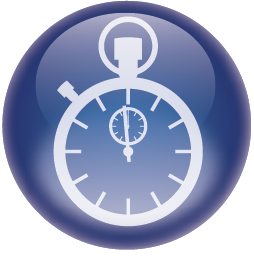Chapter 4: Principles
Previous chapter: 3 Philosophy and Fundamentals
4 Principles
4.1 Introduction to the DSDM Principles
The eight principles of DSDM support DSDM’s philosophy that
“best business value emerges when projects are aligned to clear business goals, deliver frequently and involve the collaboration of motivated and empowered people”.
They also bring the Agile values to life by guiding the team in the attitude it must take and the mindset it must adopt in order to deliver consistently whilst still remaining flexible.
Compromising any of the following principles undermines the philosophy of DSDM and introduces risk to the successful outcome of the project. If a team doesn’t follow all of these principles then it won’t get the full benefit of the approach. The collective value of DSDM’s principles enables organisations to deliver best value business solutions collaboratively.
The eight DSDM principles are:
This is Point 4.2 - Principle 1
- Focus on the business need
- Deliver on time
- Collaborate
- Never compromise quality
- Build incrementally from firm foundations
- Develop iteratively
- Communicate continuously and clearly
- Demonstrate control
4.2 Principle 1 - Focus on the Business Need
Specific business roles in DSDM, in conjunction with the business products created in the Foundations phase, and key practices such as timeboxing and MoSCoW prioritisation, enable DSDM teams to fulfil this principle.
4.3 Principle 2 - Deliver on Time
Combining the DSDM practices of timeboxing and MoSCoW prioritisation enables DSDM teams to protect deadlines whilst flexing the features, and to build a reputation for timely and predictable delivery. The ability to deliver on time and to meet the prioritised expectations of the business in the short term – the timebox – forms the basis of control over the longer-term deliver y of the project through timely delivery of Increments.
4.4 Principle 3 – Collaborate
DSDM’s Business Visionary, Business Ambassador and Business Advisor roles bring the appropriate subject matter experts into the project so they can contribute to the solution. The Solution Development Team brings together business and technical roles in a single team. This one-team culture is fostered by the Business Analyst helping to facilitate business agreement on the requirements and the Team Leader taking responsibility for facilitating a high level of collaboration between all Solution Development Team members. Facilitated workshops enable stakeholders to share their knowledge effectively with other members of the project team.
4.5 Principle 4 - Never Compromise Quality
Ensuring testing is properly integrated into the Iterative Development process, with regular reviews throughout the project lifecycle, helps the DSDM team to build a quality solution. The review and quality control products created as the project proceeds help demonstrate that the quality of the solution is meeting the expected standard.
Using DSDM, everything is tested as early as possible. MoSCoW prioritisation and timeboxing are used to ensure that testing is appropriate and under taken without introducing unnecessary risks. In an IT project, the use of test-driven development techniques can also significantly improve the quality of the solution by ensuring that the acceptability of the solution is understood before development starts.
4.6 Principle 5 - Build Incrementally from Firm Foundations
DSDM teams implement this principle through the appropriate application of a project lifecycle, which delivers a solid base of knowledge during Feasibility and Foundations phases before building the solution incrementally during the Evolutionary Development phase.
4.7 Principle 6 - Develop Iteratively
Within the constraints of time and cost, change is actively encouraged in order to evolve the most appropriate solution. DSDM uses iteration and constant review to make sure that what is being developed is what the business really needs. Cycles of feedback should form part of the process for evolving all project deliverables e.g. all plans and documentation.
4.8 Principle 7 - Communicate Continuously and Clearly
DSDM emphasises the value of human interaction through Stand-ups (see Chapter 13 - Timeboxing), Workshops, clearly defined roles and active business involvement.
Modelling and Prototyping make early instances of the solution available for scrutiny. These practices are far more effective than the use of large textual documents, which are sometimes written for reasons other than achieving the business objectives of the project.
4.9 Principle 8 - Demonstrate Control
The use of well-defined Timeboxes, with constant review points, and the preparation of the Management Foundations and Timebox Plans, are designed to assist the Project Manager and the rest of the project team to follow this principle.
4.10 Summary
The eight principles help direct and shape the attitude and mindset of a DSDM team. Compromising any of the principles undermines DSDM’s philosophy, as together they deliver a collective value that outweighs their individual benefits.








